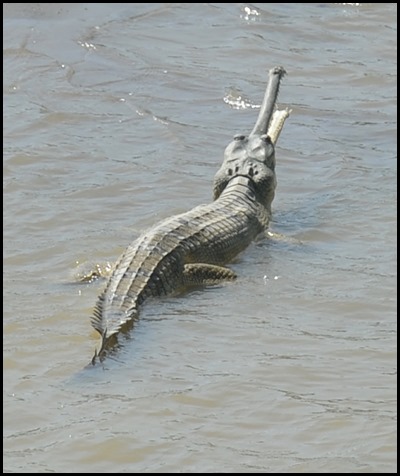To Bardia Crocs

|
To Bardia, a Stop at Babai
River to See Crocodiles
 En route to Wild Trak Adventure, John
(owner) and Santosh (driver) asked if we would like to stop and see some
crocodiles. We jumped at the opportunity and soon we were parked by the Babai
Bridge that crossed the river of the same
name.
 On the left of the bridge was a sluiceway (facing south toward India).
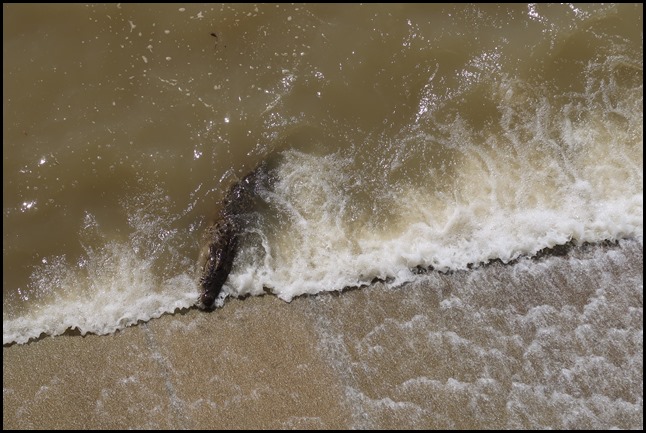 Our first chap sitting waiting for fish to slip down the
sluice.
 Bear wanted to
know why huge tree trunks were caught downstream,
John told us “two years ago there was a massive monsoon and the river came up
and over the road and there they were.”
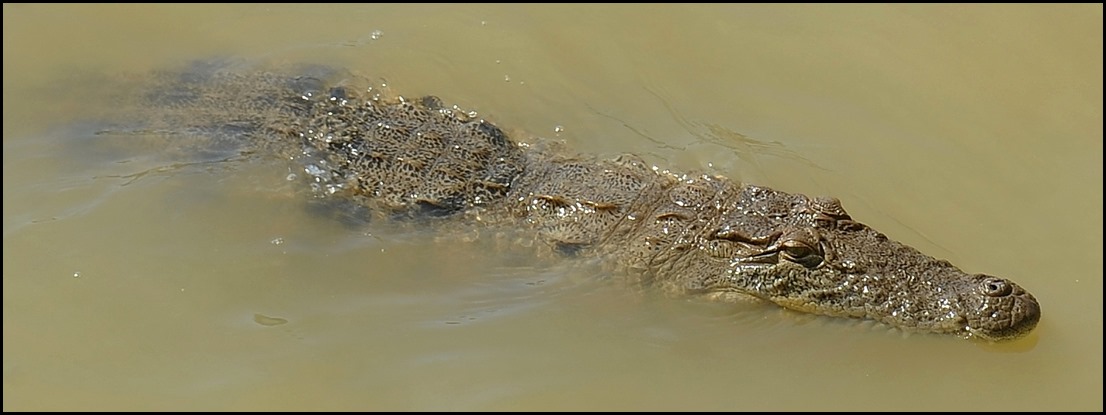 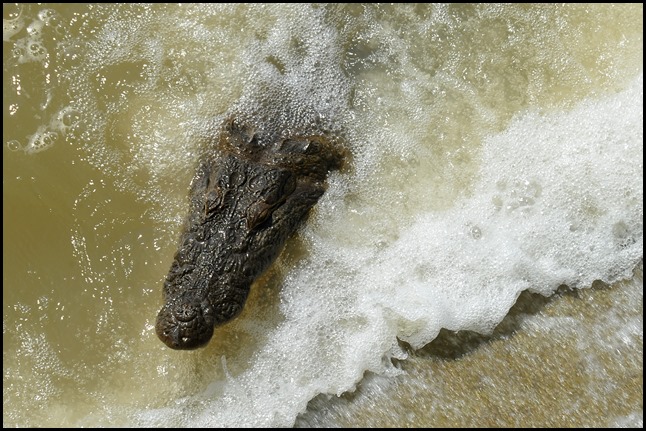  Mugger crocodile (Crocodylus
palustris)
From Endangered Species  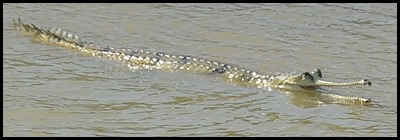 Gharial
(Gavialis gangeticus)
From the National Geographic: Gharials, sometimes called gavials, are a type of Asian crocodilian distinguished by their long, thin snouts. Crocodilians are a group that includes crocodiles, alligators, caimans, and more. Average lifespan in the wild: 40 to 60 years. Size: 12.25 to 15.5 feet. Weight: 2,200 pounds Population: Once found from Pakistan to Myanmar (Burma), the reptile's range has shrunk to two countries: India, along the Chambal, Girwa, and Son Rivers; and Nepal, along the Narayani River. Since the mid-1900s, the gharial's numbers have declined as much as 98 percent due to hunting for traditional medicine and drastic changes to their freshwater habitats. For instance, people have manipulated the flow of rivers, causing certain areas to dry out and making it more difficult for water-reliant gharials to survive. The International Union for Conservation of Nature classifies the species as critically endangered. Behavior: A typical gharial will reach 12 to 15 feet in length and weigh up to 2,000 pounds. Gharials regulate their body temperature by basking in the sun to warm up or resting in shade or water to cool down. Male gharials sport a large growth on their snout called a ghara, the Hindi word for "pot." Males use their gharas to vocalize and blow bubbles during mating displays. The animals congregate to mate and make nests during the dry season, when females lay eggs in sandbanks along slow-moving sections of water. Eggs incubate for 70 days, and hatchlings will stay with their mothers for several weeks or even months. Gharials do not stalk and lunge at prey like other crocodilians—their snouts contain sensory cells that can detect vibrations in the water. By whipping their heads from side to side, the animals zero in on fish and grab them in their jaws, which are lined with more than a hundred teeth.
ALL IN ALL THRILLED TO SEE
OUR FIRST CHAPS
ANCIENT AND POINTY-
NOSE |


